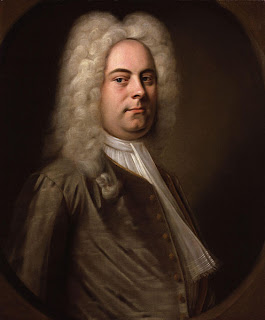Hymn Story: "Joy To The World"
Music: George Frederick Handel, Lowell Mason
Text: Isaac Watts
Even though "Joy To The World" is one of the most famous hymns for Christmas, it was not originally written for Christmas.
The lyricist was Isaac Watts (1674-1748), an English author of over 600 hymns. He was best known for his collection entitled "Psalms of David Imitated In The Language Of The New Testament" (1719), a collection in which he paraphrases all but five of the 150 psalms.
Displaying a high interest in theological and literary study at a very early age, Isaac Watts begins writing hymn texts, driven by a strong desire to improve what he considered a sorry state of congregational worship music of the church in his day.
The text of "Joy To The World" is based on Psalm 98, which is a proclamation of God's sovereignty and also an anticipation of his day of judgement.
The tune is believed to have been created by George Frederick Handel (1685-1759), one of the greatest composers of the Baroque period and of all time. Later, the American composer and music educator Lowell Mason (1792-1872) adapted this tune into the song we sing today. Lowell Mason is credited as being the founder of American music education. Since there was no funding for music classes in schools, Mason funded the program himself. Throughout his lifetime, Lowell Mason wrote at least 1600 hymns and choruses.
When the hymn was published by Mason, Americans embraced it and labeled it as a Christmas tune, even though the original intention of the composer/lyricist/arranger was not to create a Christmas song.
The music is elegant, simple, and majestic. A wonderful example of a masterful use of the major scale. The first notes in the tune are built on an entire descending major scale. From there, the entire tune uses those same notes, in different patterns, without using any other notes.
"Joy To The World", whether sung at Christmas or anytime throughout the year, remains a great example of the immense impact one simple song can have from one generation to the next.
Psalm 98:4 NIV
"Shout for joy to the LORD, all the earth, burst into jubilant song with music."
Photo Credit: "Adoration of the Shepherds" by Gerard van Honthorst, 1622
















